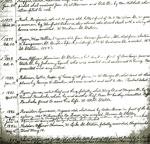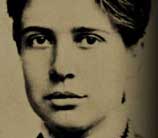
The Chicago Historical Homicide Project began with the discovery of the availability of a rich log of more than 11,000 homicides maintained consistently and without interruption by the Chicago Police Department over the course of 60 years, from 1870 to 1930. The fact that these records were kept without interruption by a single institutional record keeper makes these files an important new resource for the study of homicide, crime, urban development, and the police themselves. The records are a lens through which to view the history of the city of Chicago during a period of extraordinary social, economic and political development. Because these crimes became cases, these records are also the foundation for a study of courts and legal institutions. The police and their operations were inextricable from those they answered to, the mayor and alderman, ward politicians, and the citizens of Chicago. Thus the records offer an opportunity to study the rule of law, or its absence, and this theme is echoed throughout the various facets of the research conducted to date under the auspices of this Project.
The first step of the Project was the transformation of the handwritten records into a Word file, exactly as they appear in the handwritten police log, including misspellings, idiosyncratic punctuation, inconsistencies, and ambiguities with the single very important addition of a unique single sequential number for each case.
The next step was the coding and data processing of important variables for criminological research, and the publication of a series of academic articles in the Journal of Criminal Law and Criminology. That process took from 1998 to 2003 and research was supported by several grants and by the research funds of the Northwestern University School of Law.
After the publication of the first round of academic research articles in the Journal of Criminal Law and Criminology, the next step was the design and creation of the web site which would make available to any interested party all of the data, all of the analysis of that data up to the present time, along with a wealth of contextual material. The purpose of creating the web site was to make available to a wide audience, of teachers and students at the undergraduate and graduate level, to professionals and to amateurs, all of the cases and the rich contextual materials available on this period in Chicago.
We thought this wonderful archive of materials should be available to everyone, not just teachers and students, but to any one interested in this subject. And the technology is such that any person with a home computer and the standard office software can download the cases and perform additional analyses.
